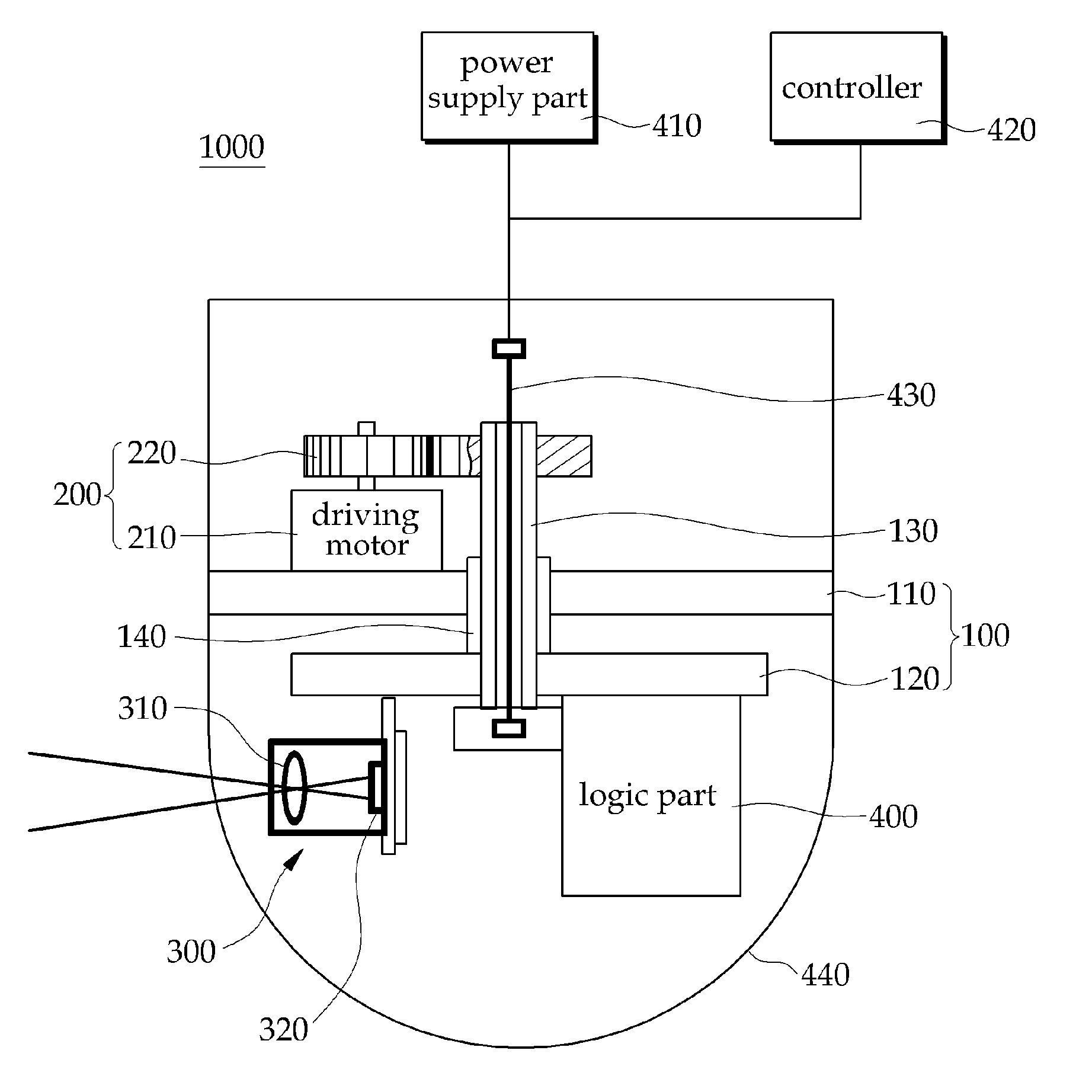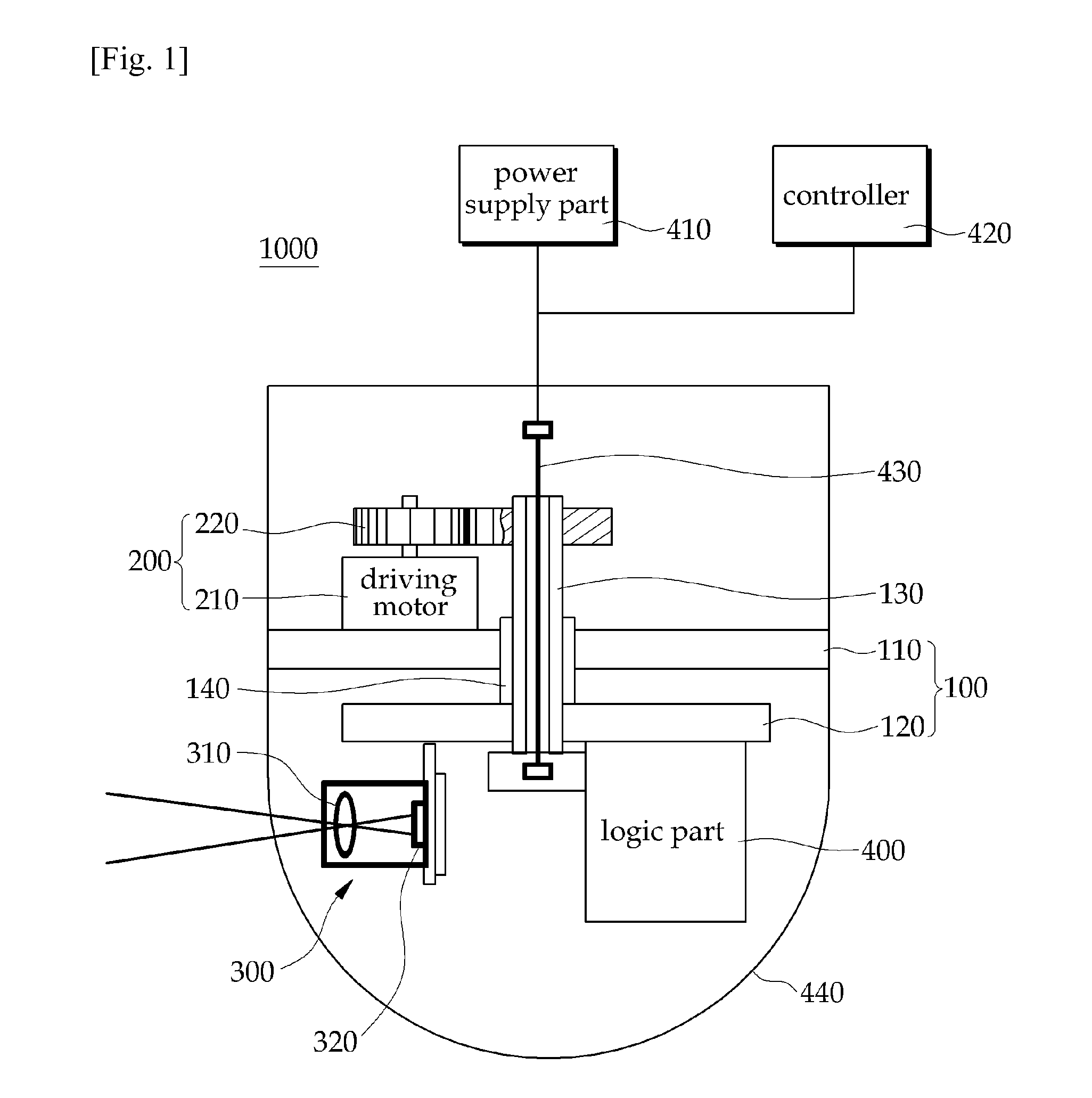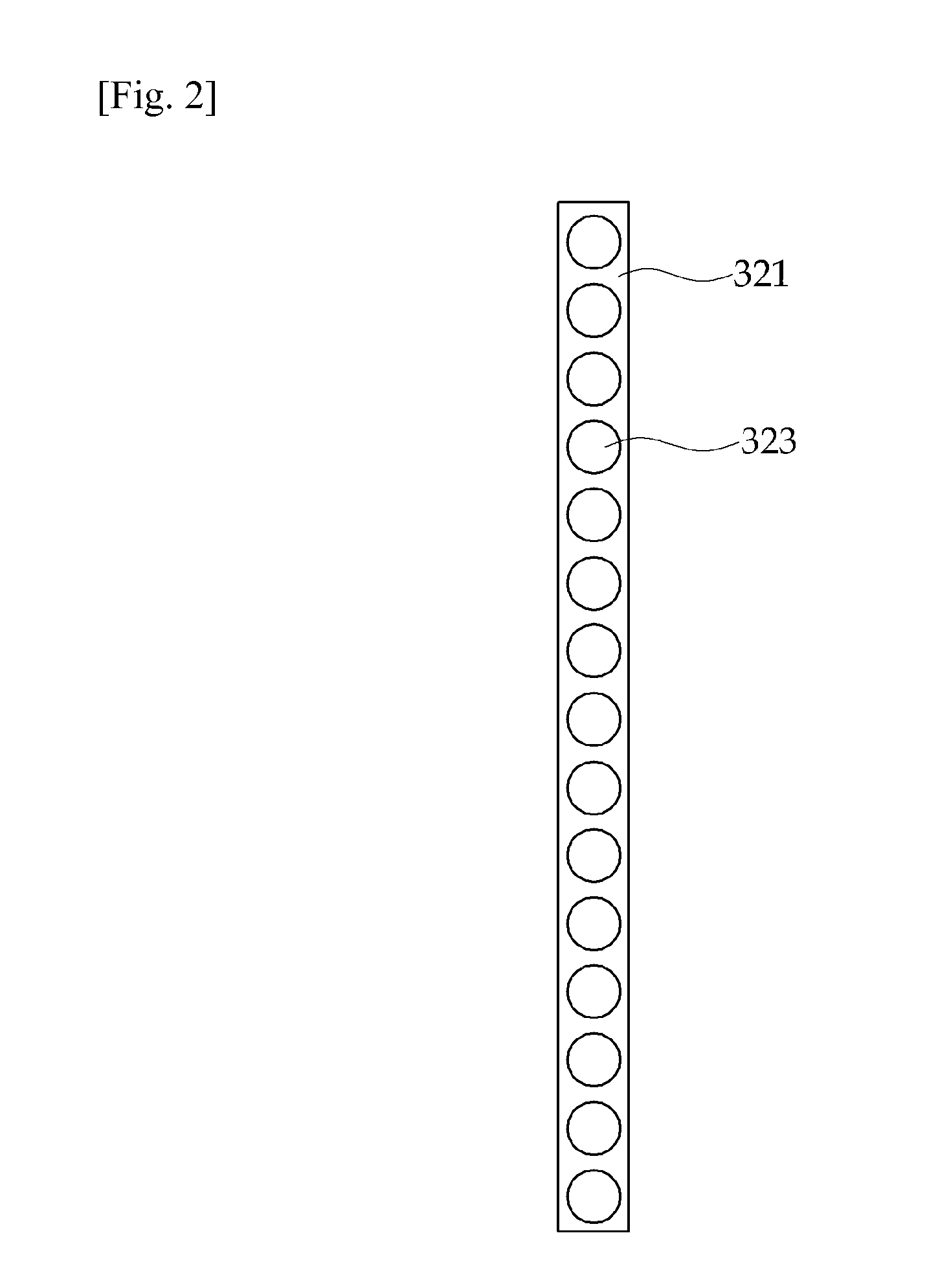Surveillance camera device
- Summary
- Abstract
- Description
- Claims
- Application Information
AI Technical Summary
Benefits of technology
Problems solved by technology
Method used
Image
Examples
Embodiment Construction
[0025]Hereinafter, a surveillance camera device according to the exemplary embodiments of the present invention will be described in detail with reference to accompanying drawings. Those skilled in the art will appreciate that various modifications, additions and substitutions are possible, without departing from the scope and spirit of the invention as disclosed in the accompanying claims and their equivalents. The same reference numerals will be used to refer to the same elements through the drawings. In addition, the thickness and size of some components shown in the drawings can be magnified, reduced or schematically drawn to clarify or comprehend the present invention.
[0026]The terms “first” and “second” can be used to explain various elements but the elements are not limited to such terms. The terms are used to distinguish one element from the other element. Thus, an element referred to as a first element in one embodiment can be referred to as a second element in another embo...
PUM
 Login to View More
Login to View More Abstract
Description
Claims
Application Information
 Login to View More
Login to View More - R&D
- Intellectual Property
- Life Sciences
- Materials
- Tech Scout
- Unparalleled Data Quality
- Higher Quality Content
- 60% Fewer Hallucinations
Browse by: Latest US Patents, China's latest patents, Technical Efficacy Thesaurus, Application Domain, Technology Topic, Popular Technical Reports.
© 2025 PatSnap. All rights reserved.Legal|Privacy policy|Modern Slavery Act Transparency Statement|Sitemap|About US| Contact US: help@patsnap.com



